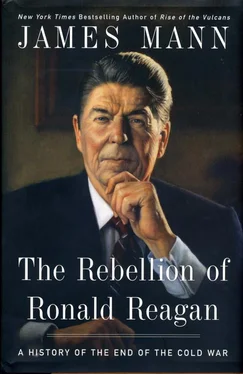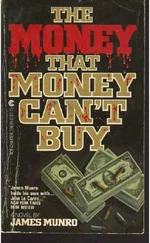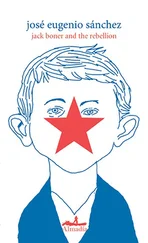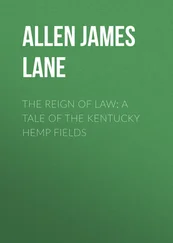“I did get in one shot at Shultz, which I thought was quite effective,” recalled Nixon in the memo he wrote for his own files a few hours later. Nixon had done this by employing his favorite rhetorical device of insisting he was not doing what in fact he was about to do. “I introduced it by saying I didn’t want anyone to get the idea that I had anything against him [Shultz],” Nixon said, recounting his own conversation. “I said he had been a great Secretary of the Treasury, a great Secretary of Labor and a great director of OMB [the Office of Management and Budget], and that he did an outstanding job of negotiating with [AFL-CIO chairman George] Meany for a period. But I said that negotiating with Meany was much different from negotiating with Gorbachev.” 3
Reagan asked Nixon for his opinion of Gorbachev, who had been saying he did not want an arms race in either nuclear or conventional weapons. Nixon responded with skepticism that Gorbachev represented anything new. He “could not have gotten his present position or have retained it unless he wanted to be in a position to neutralize Europe or dominate it by either conventional or nuclear blackmail,” said Nixon.
Reagan defended his proposal to eliminate ballistic missiles. Those were the weapons that worried him, he told Nixon, because “just a finger on the button could set them off.” He confirmed that he and Gorbachev had talked about the idea of getting rid of all nuclear weapons, and made plain he would be happy to do so. “It is clear that Reagan thinks the Reykjavik formula (seeking a drastic reduction in ballistic missiles and nuclear weapons) is still a good idea,” Nixon wrote. Moving to counter the claims about Soviet superiority in conventional arms, Reagan told Nixon that the United States and Western Europe together had “enormous superiority over the Soviet Union, which would mean that any kind of arms race would be one they would lose.”
Twice during the meeting, Reagan probed for a compromise with Nixon, suggesting that their two positions on how to deal with Gorbachev were not too far apart. Nixon didn’t respond; he wasn’t interested. At another juncture, Baker suggested Nixon and Kissinger should reassure their contacts in the Soviet Union that all Americans were united in wanting a deal with Gorbachev. Nixon demurred. “I could see of course what he was driving at, and pointed out that I didn’t think it was a good idea,” he wrote. Trying once more, Baker said it would strengthen the American negotiating position if Kissinger and Nixon made clear they supported the administration. Nixon rebuffed the overture. “I am afraid we just don’t agree on that point,” he said.
The meeting of president and ex-president was strikingly lacking in warmth. Reagan “was courteous throughout, but I think I sensed a certain coolness on his part,” wrote Nixon. “I don’t know whether Nancy was in the Residence at the time, but if she was, he did not suggest that she come in and say hello. My guess is that she is probably as teed off as Shultz is.”
Nixon came out of the meeting believing that Reagan looked “far older, more tired, and less vigorous in person than in public.” Moreover, Nixon thought, “Reagan, candidly, did not seem to be on top of the issues—certainly in no way as knowledgeable as Gorbachev, for example, which of course would not be surprising.”
Nixon’s conclusion about the president was damning: “There is no way he [Reagan] can ever be allowed to participate in a private meeting with Gorbachev.”
Reagan and Nixon had completed a remarkable reversal of roles. In the 1970s, Nixon had pursued a working accommodation with the Soviet Union; eventually, Reagan had emerged as the leading Republican critic of this policy of détente. Now, in the 1980s, Reagan sought agreements with the Soviet Union that would ease the nuclear dangers of the Cold War—and Nixon, joined by Henry Kissinger and other veterans of the Nixon administration, disparaged his efforts. Reagan the hawk had become a dove; Nixon the dove had returned as a hawk.
It is useful to summarize the powerful interests that were arrayed against Reagan in early 1987 as he and Gorbachev sought limits on missiles and nuclear weapons. First, Reagan’s bedrock conservative supporters had abandoned him—if not in all respects, then certainly in his policies toward the Soviet Union. “For Western Europe, the lights may soon be going out again,” mourned National Review in one Cassandra-like editorial; it deemed Reagan’s attempts to negotiate a deal with Gorbachev to be “catastrophic.”
Second, the U.S. intelligence community maintained that, stylistic changes aside, Gorbachev was trying to reassert Soviet power in the traditional fashion. Summarizing his views of Gorbachev through the end of 1987, Robert Gates, the CIA’s deputy director and leading Soviet specialist, concluded: “He changed the tone and the face of Soviet foreign policy, but not the substance.” 1
Third, many in America’s national-security elite—those who, like Nixon and Kissinger, had been directly involved in setting policy toward the Soviet Union for the previous four decades—were determinedly resisting Reagan’s attempts to curb or eliminate nuclear weapons and ballistic missiles. Even Frank Carlucci, whom Reagan brought in as his national security adviser at the end of 1986, told the president he had problems with the far-reaching ideas that had been discussed at Reykjavik. 2
Against all these forces, Reagan enjoyed a couple of advantages of his own. The first was his own personal popularity, underlined by his overwhelming victory in the 1984 election. The second was the latitude he enjoyed as a second-term president. While retaining the powers of the nation’s chief executive, he would not be obliged to run for reelection again.
What accounted for the striking divergence between Reagan and his critics from the right wing and from Washington’s foreign-policy establishment? Why was Reagan so much more willing to contemplate far-reaching changes in the Cold War, to view Gorbachev as at least potentially an agent of fundamental change in the Soviet Union? How did Reagan and Nixon come to such different conclusions?
Many attributed Reagan’s behavior as a short-term response to the political problems he faced at the time. In late 1986, the Iran-Contra scandal broke; it was revealed that Reagan’s National Security Council had been secretly selling weapons to Iran and using the profits to fund the Contra rebels fighting against the government of Nicaragua. In the months that followed, Reagan’s presidency had hit its nadir. He had shuffled the top ranks of his administration; Carlucci had been brought in to replace John Poindexter as national security adviser, and Baker had taken the place of Donald Regan as White House chief of staff. On March 9, 1987, the cover of Time magazine carried a picture of Reagan with the question: “Can He Recover?” By this analysis, Reagan’s eagerness for a deal with Gorbachev represented an attempt to revive his own flagging administration after Iran-Contra.
Yet this explanation does not fit the facts. Nixon and the other critics of Reagan’s Soviet policy had been upset above all by his willingness at Reykjavik to contemplate the elimination of ballistic missiles and nuclear weapons. But the Reykjavik summit took place well before the Iran-Contra scandal burst forth. Iran-Contra had not prompted Reagan’s attempt to eliminate ballistic missiles; on the contrary, it had slowed down the effort that was already under way. The declassified archives show that soon after Reykjavik, the Reagan White House told the Pentagon to begin examining and making plans for Reagan’s goal of eliminating ballistic missiles. The initiative flagged when Iran-Contra led to Poindexter’s resignation, and Carlucci, his successor, made plain his dislike for what had taken place at Reykjavik. “Carlucci did not agree with the president’s proposal to destroy ballistic missiles or with his aspiration to eliminate nuclear weapons,” Jack Matlock, then the NSC’s leading Soviet expert, concluded sadly. 3
Читать дальше












